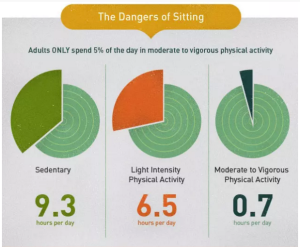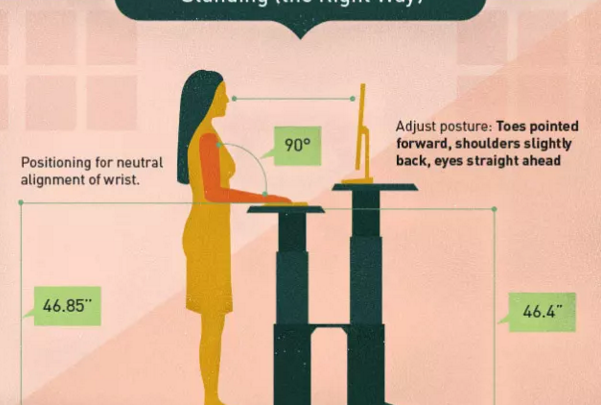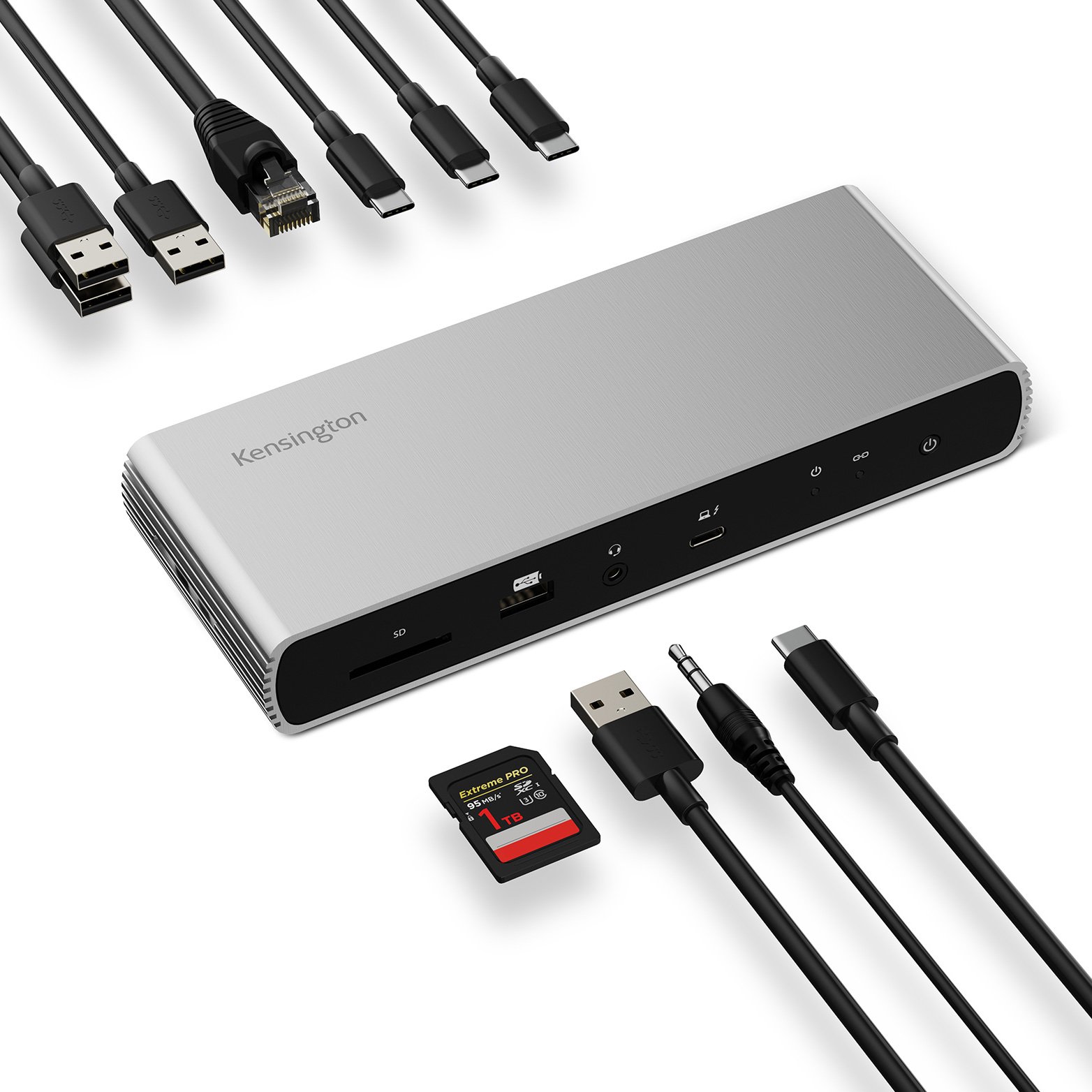
The average employee spends around eight hours per night asleep in bed and slightly longer than this hunched over a desk. If you plot this against a 24 hour day, the volume of time spent sedentary becomes starkly apparent. It’s not difficult, therefore, to see just how important ergonomic accessories in the workplace are to maintaining healthy and positive wellbeing among all employees.
When responsible for ensuring the health and wellbeing of employees, it is important to first understand the negative impact of a lack of exercise and movement throughout the average working day. Making necessary changes to working practices will ultimately improve the wellbeing of your team and in turn, their own productivity – benefitting not only their own health but your company’s bottom line as well.
A study by the RAND Corporation found that employees with chronic health conditions (including musculoskeletal complaints such as back and neck problems) are far more likely to have time off work and/or display ‘presenteeism’ (turning up for work feeling unwell and therefore being less productive). They stated that from 1990 to 2008 the rate of self-reported work-related illnesses doubled - with the rate of evolving technology on a steep upward incline and the amount of sedentary multi-device working still on the rise, this is only going to keep increasing.

Damage
Sitting all day long at a desk, staring at a screen, is hardly what we humans were built for – we were born to move! According to Pain Management and Injury Relief (PMIR) experts, the average adult sits for 60% of their day. The sedentary nature of the average desk job increases the risk of numerous health problems, such as:
• Back and neck pain
• Cardiovascular disease
• Obesity
• Type 2 diabetes
• Poor circulation
• Eye strain
• Headaches
• Blurred vision
• Dry eyes
Sitting down, although the easier alternative to standing, quickly increases pressure on parts of our body that were not intended to carry our weight for such prolonged periods. Research by PMIR found that of the workers who were provided with a sit-stand desk, the following statistics applied:
- 87% felt more comfortable and more energized
- 75% felt healthier
- 71% felt more focused
- 66% felt that they were more productive
- 62% felt happier
- 33% felt less stressed
Employees who stand or take regular breaks from sitting down during the day can burn more calories and improve overall wellbeing compared to workers who remain seated throughout the day. Reducing ‘sitting time’ to less than 3 hours per day can increase overall life expectancy by two years – simply by reducing the risks associated with a sedentary lifestyle. Enabling employees to work on ergonomic stations that are properly lit and kept at a comfortable temperature not only reduces their risk of ill health, it also greatly improves their mood, attitude to work and consequently their productivity.

Employee Benefits
There is plenty of guidance on exactly how a workstation should be set out (whether the employee is standing or sitting) – and this should be followed to minimize the damage that could otherwise occur through excessive screen and desk time. For instance, an inexpensive document holder could be used to hold paperwork close to the monitor wherever possible, and the monitor itself should be facing directly towards the employee, at a comfortable height.
PMIR offer detailed advice on this issue and also encourages employers to make regular exercise breaks (five minutes per hour) part of normal working life. There are, of course, also health and safety issues surrounding workplace comfort and design. For instance, EC legislation from 1993 dictates that employers have a responsibility to provide regular eye examinations and even pay for glasses if these are required for working with VDU equipment. Employers must also allow for sufficient breaks or variation of duties throughout the working day to break up the amount of time spent staring at a screen.
Impact on Wellbeing and Productivity
Having appropriate, ergonomically-designed equipment, plus a working environment that allows for regular screen breaks can work wonders for an employee’s overall wellbeing. At Kensington we work hard to create cutting edge equipment, based on the latest research, to improve the overall health of your employees: a healthy employee is a productive worker after all, and investing in the right workplace technology will produce great returns.
For instance, using a SmartFit Sit/Stand desk that allows employees to quickly and easily move away from their desk to undertake other tasks in the office, has been shown to greatly improve employees’ levels of comfort, energy, focus and productivity - and reduce their overall stress levels.

Remember that working online at home or at work accounts for only part of the time that your average employee will spend looking at screens – mobile phones and tablets used for work and pleasure also take their toll. These need to be factored in when considering how best to help your employees to protect their eyes and overall health.
Simple adaptations like ergonomic workstations and basic desk accessories will result in clear ROI in terms of greater productivity and quality of work as well as lower levels of absenteeism and presenteeism.
